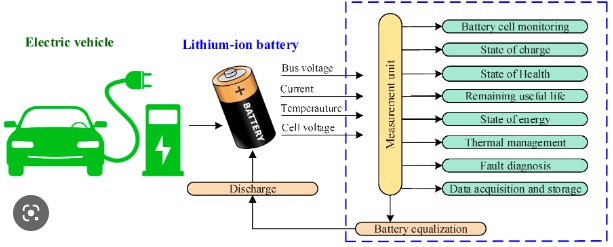
Battery Manufacturing Machines Market Outlook (2023 to 2033)
As per Future Market Insights, the battery manufacturing machines market is anticipated to attain a value pool of US$ 10 billion by 2023-end. Global demand for battery manufacturing machines is expected to rise at a CAGR of 26% to US$ 100 billion in 2033.
Key Expansion Drivers
Increasing demand for marine batteries: The increasing demand for electric boats and ships is driving the demand for marine batteries. As the marine industry continues to adopt electric propulsion, there will be a growing need for battery manufacturing machines that can produce high-capacity marine batteries.
Growth of the aerospace industry: The aerospace industry is increasingly adopting electric propulsion for aircraft and drones, which is driving the demand for high-performance batteries. This presents prominent growth prospects for battery manufacturing machine manufacturers to produce batteries for the aerospace industry.
Expansion of the telecommunications industry: The telecommunications industry is increasingly adopting renewable energy sources, such as solar and wind, to power their infrastructure. As the industry grows, there will be a growing need for battery manufacturing machines that can produce batteries for telecom applications.
Increasing demand for military applications: The military is increasingly adopting electric vehicles and energy storage systems to reduce its reliance on fossil fuels. This presents prominent growth prospects for battery manufacturing machine manufacturers to produce batteries for military applications.
Expected Growth Opportunities
Increasing adoption of automation: The adoption of automation in battery manufacturing is increasing, and this presents an opportunity for manufacturers of battery manufacturing machines. Automation can help increase efficiency, reduce costs, and improve quality in the manufacturing process.
Growing demand for portable power solutions: The demand for portable power solutions, such as portable chargers and power banks, is growing as more people rely on portable electronic devices. This presents an opportunity for battery manufacturing machine manufacturers to produce batteries for these application
Increasing adoption of wearable devices: The demand for wearable devices, such as smartwatches and fitness trackers, is growing as people become more health-conscious. This presents an opportunity for battery manufacturing machine manufacturers to produce small, lightweight batteries for wearable devices.
Prevalent Market Trends
Development of advanced manufacturing technologies: The development of new and advanced manufacturing technologies, such as additive manufacturing (3D printing), is driving the growth of the battery manufacturing machines market. These technologies can help reduce the cost and time required to manufacture batteries.
Emergence of Solid-State Batteries: The emergence of solid-state batteries is also driving the growth of the Battery Manufacturing Machines Market. Solid-state batteries are safer and have higher energy density than traditional lithium-ion batteries, which makes them a more attractive option for use in EVs and other applications. However, the manufacturing process for solid-state batteries is more complex than traditional lithium-ion batteries, which is driving the need for new battery manufacturing machines that are designed specifically for the production of solid-state batteries. This trend is expected to continue in the coming years, as more companies invest in the development of solid-state batteries.
Development of Battery Recycling Technology: The development of battery recycling technology presents an opportunity for the Battery Manufacturing Machines Market. As the demand for batteries increases, so does the need for battery recycling. Recycling can help reduce the environmental impact of battery production and extend the life of batteries, which can ultimately reduce costs. As battery recycling technology continues to develop, there will be a growing need for battery manufacturing machines that can produce recycled batteries.
Increasing E Mobility and enhanced application of electric devices for various industries is key demand factor for battery manufacturing machines. Increasing concern for reducing carbon footprint is anticipated to augment growth for this market.
What is Driving Demand for Battery Manufacturing Machines?
The rapid growing demand of batteries from automotive sector due to increasing popularity of electric vehicles and enhanced applications of battery in vehicle is boosting the market demand of battery manufacturing machines, also new innovations and growth of electric consumer appliances are enhancing sales of batteries.
The demand for li-ion battery based product has risen in past few years and the demand growth is anticipated to continue in upcoming period due to enhancing applications of Li-ion based batteries in various applications due to its safety and ability to work in different temperature conditions, Key manufacturers are also focusing on providing innovative and convenient to use manufacturing equipment.
Furthermore various initiatives taken by governments and various organizations to reduce the carbon foot print and E-waste is key factor the enhanced sales of the battery manufacturing machines in upcoming periods, battery manufacturing machines supports sustainable environment by producing and remanufacturing used batteries which is beneficial way to decrease the e-waste.
Automotive Industry to Boost the Demand for the Battery Manufacturing Machines in Upcoming Period
Automotive Industry is experiencing rapid growth due to innovations and rapid updating technologies, escalated sales of electric & hybrid vehicles are lifting automotive sector up, and the sales of electric and hybrid vehicles are expected to be raising higher in upcoming period, owing to that reason battery manufacturing machine sales are also expected to be higher since battery is key component of electric vehicle.
However, the demand from automotive industry was effected due COVID - 19 due to which production and sales of vehicles were highly impacted. Also manufacturing plants were closed and supply network was shut off, which impacted sales of Battery manufacturing machines negatively.